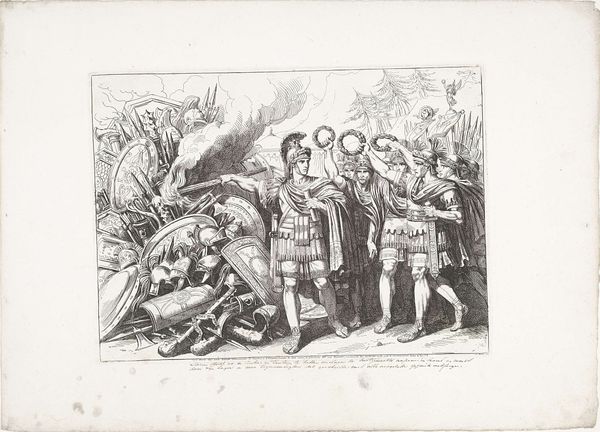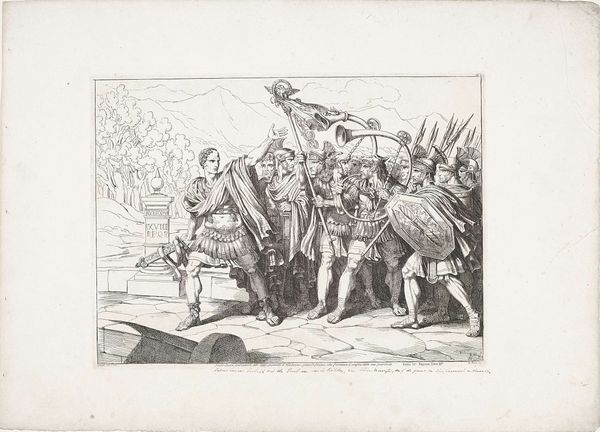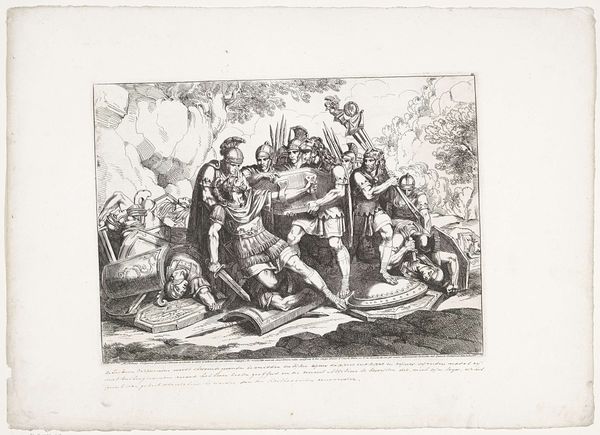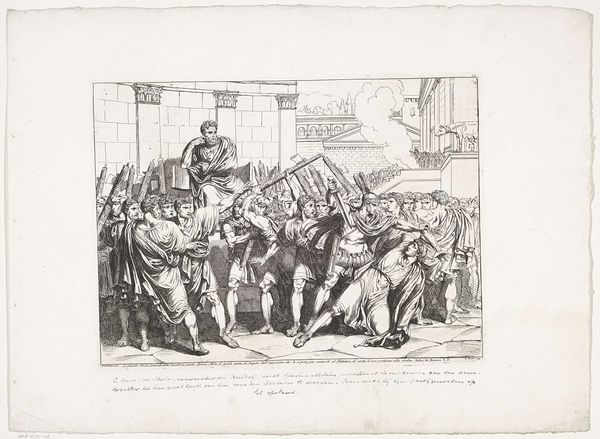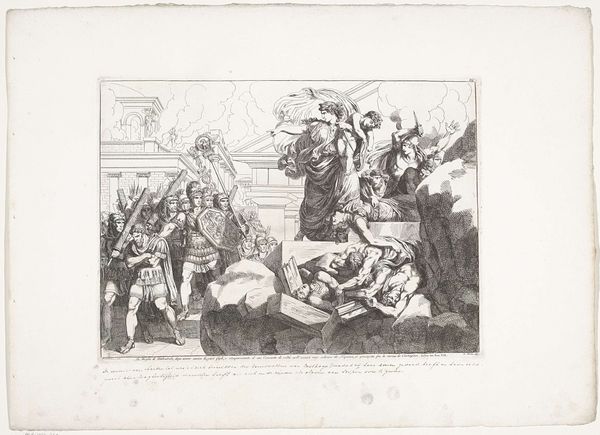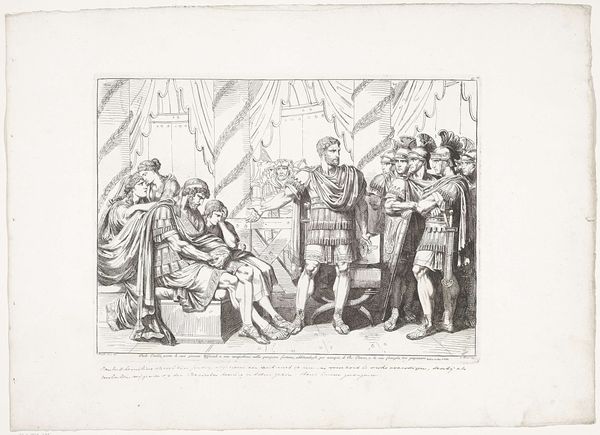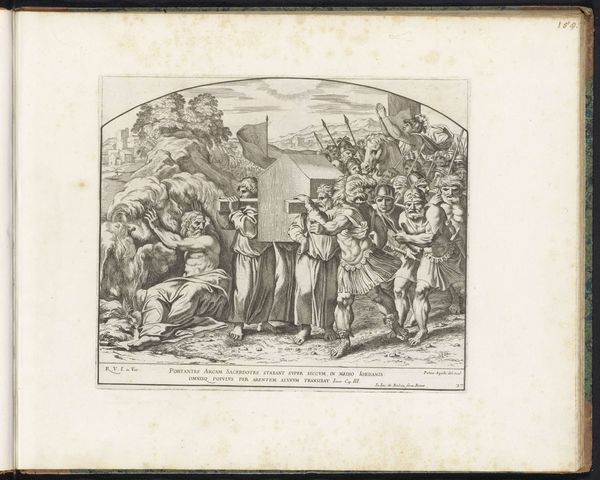
drawing, print, etching, intaglio, pencil, engraving
#
drawing
#
neoclacissism
#
narrative-art
# print
#
pen sketch
#
etching
#
intaglio
#
pencil sketch
#
old engraving style
#
figuration
#
pencil
#
line
#
history-painting
#
academic-art
#
engraving
Dimensions: height 315 mm, width 425 mm
Copyright: Rijks Museum: Open Domain
Curator: Take a moment to look at this engraving by Bartolomeo Pinelli, created in 1818, entitled "Jugurtha Captured by Silla and his Soldiers." The etching presents a dramatic historical scene. What's your initial reaction? Editor: Oh, there is so much to absorb here! My eye darts all over—a flurry of classical figures. It is a tense tableau, that moment frozen right before… what? Who knows what. Curator: Absolutely. We observe how the composition places Jugurtha in the center, highlighting his capture and subjugation, framed by the active roles and agency of Sulla’s military force. Pinelli's utilization of intaglio is essential here. Its impact, especially on paper from the period, allows us to witness an artifact reflective of that period. The academic precision lends itself to understanding neoclassicism as an art of high standards, especially within reproductive mediums like engravings. Editor: Exactly. You almost hear the echo of stone and chisel, of labor turned into propaganda. In terms of symbolism—that central figure is radiating almost noble defiance amidst his captors, all chains and resignation and stoicism… such striking human complexity expressed with a very classical line! It's very striking, particularly his averted eyes! What secrets are locked inside his vision? Curator: The labor indeed… note Pinelli’s consistent production of prints and drawings centered around Roman history and culture. The mode of production would have necessarily entailed the management of a studio, assistants trained to translate Pinelli's sketches into reproducible prints for mass dissemination. We can read the piece itself not just as fine art, but as a commercial and ideological project. These choices, like his focus on linear representation align this with his place amongst other producers of academic art at that time. Editor: The engraving aesthetic reinforces the story: light and shadow dancing in this dance of power and vulnerability… it feels… emotionally barren but almost inevitably heroic? He could use some softening! It is the line! Almost relentless, but oh so good! And to think, he was using this reproducible art to explore Roman antiquity! Makes you really ponder cultural legacy and ownership… Curator: Indeed! Pinelli provides insight into this artistic output from this moment and a perspective deeply intertwined with his material and social reality. Editor: This engraving whispers so many unspoken questions on historical narratives. Amazing.
Comments
No comments
Be the first to comment and join the conversation on the ultimate creative platform.
